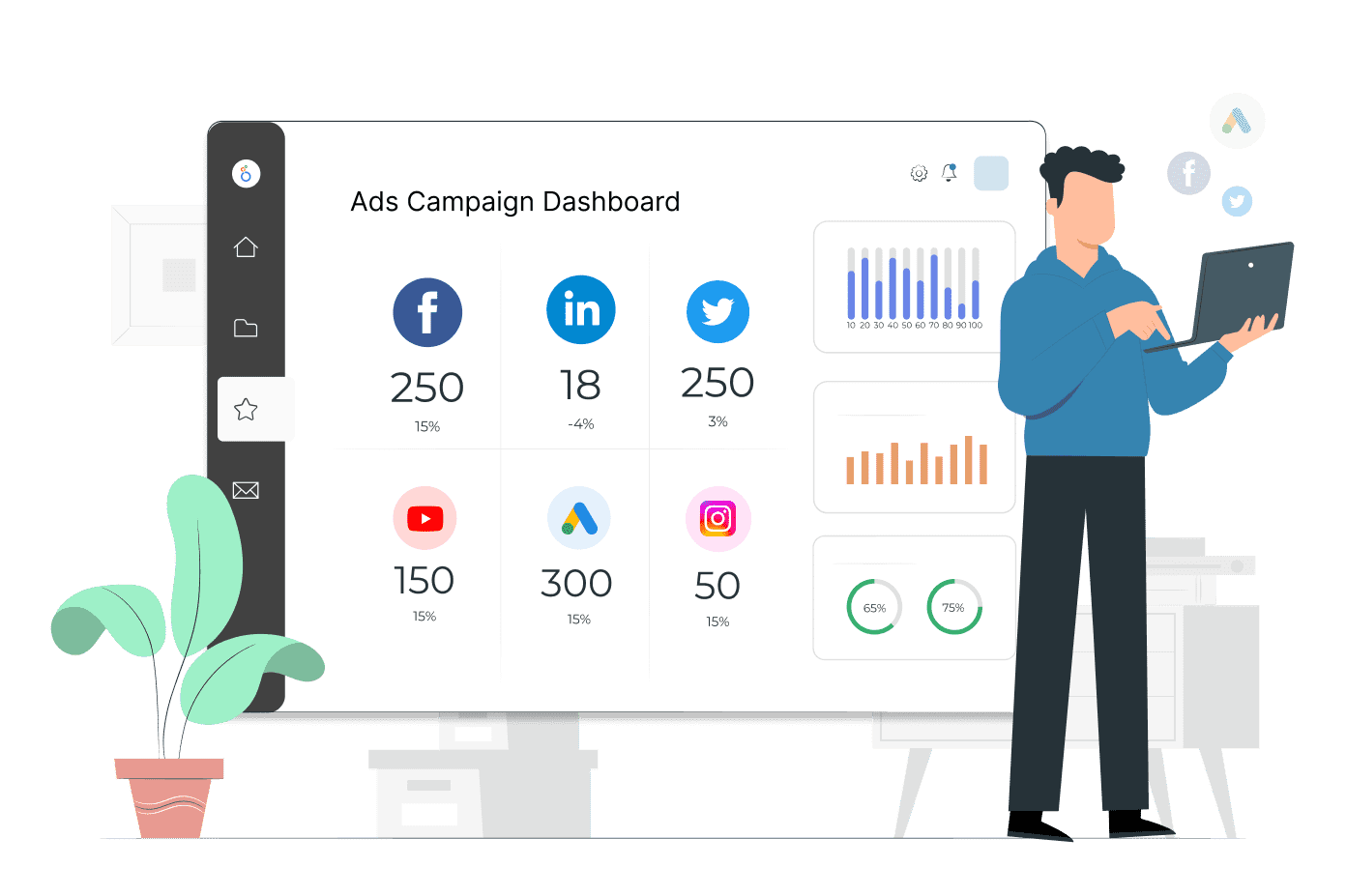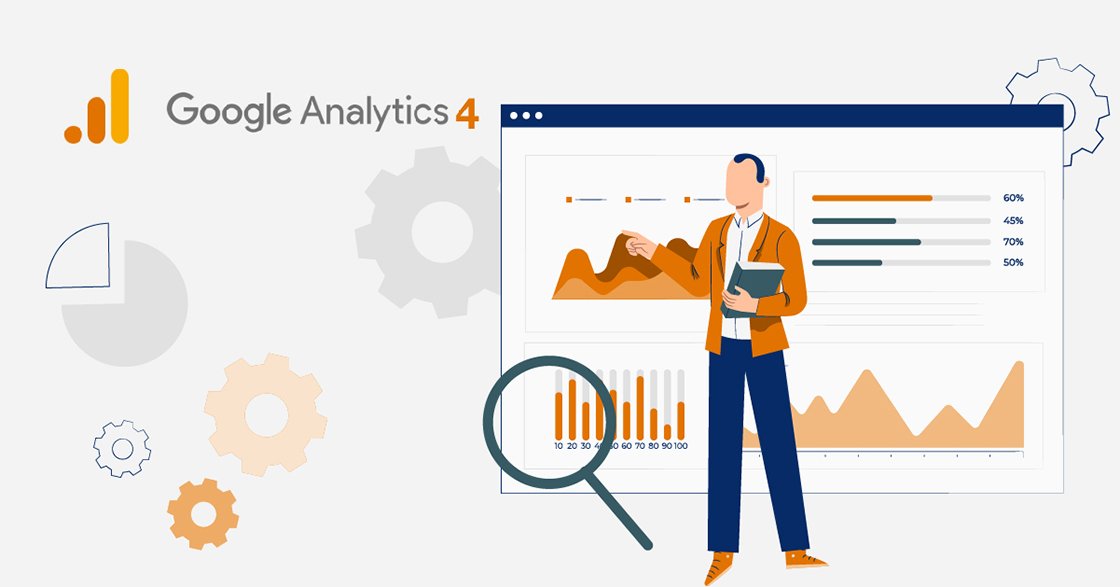Unlocking the Full Potential of Analytics through Looker and GA4 Integration

In the ever-evolving world of digital marketing, understanding and analyzing data is crucial for maximizing client’s insights. GA4 Analytics provides a comprehensive platform for collecting, organizing, and analyzing data. Coupled with Data Studio dashboards, marketers can create visually appealing and interactive reports to showcase key metrics and trends. This article explores the key features and benefits of GA4 Analytics, as well as best practices for designing effective Data Studio dashboards.
Key Takeaways
- GA4 Analytics offers advanced features such as event-based data collection and machine learning models.
- Using GA4 Analytics provides benefits such as cross-device tracking and enhanced privacy controls.
- However, GA4 Analytics has some limitations, including limited historical data and a steeper learning curve.
- Data Studio is a powerful tool for creating custom dashboards that visualize GA4 Analytics data.
- When designing dashboards, consider the target audience, data granularity, and visual hierarchy for optimal insights.
Understanding GA4 Analytics
Key Features of GA4 Analytics
GA4 Analytics offers several key features that make it a powerful tool for analyzing and understanding user behavior on your website or app.
One of the key features of GA4 Analytics is the ability to track user interactions across multiple platforms and devices. This means that you can get a holistic view of how users are engaging with your brand, whether they are browsing your website on their desktop, using your mobile app, or interacting with your content on social media.
Another important feature of GA4 Analytics is the enhanced measurement capabilities. With GA4, you can track events and conversions more accurately, allowing you to gain deeper insights into user behavior and optimize your marketing strategies.
Additionally, GA4 Analytics provides real-time reporting. This means that you can access up-to-date data and metrics instantly, allowing you to make informed decisions and take immediate action to improve your website or app performance.
In summary, GA4 Analytics offers a range of powerful features that enable you to gain valuable insights into user behavior and optimize your digital marketing efforts.
Benefits of Using GA4 Analytics
Using GA4 Analytics provides several benefits for businesses. One of the key advantages is the ability to gain a deeper understanding of user behavior and engagement. With GA4 Analytics, businesses can track and analyze user interactions across multiple platforms and devices, allowing them to identify trends and patterns.
Another benefit of using GA4 Analytics is the enhanced data privacy and security features. GA4 Analytics is designed to comply with privacy regulations and provides businesses with more control over their data. This ensures that sensitive information is protected and helps build trust with customers.
Additionally, GA4 Analytics offers advanced reporting and visualization capabilities. Businesses can create custom reports and dashboards to visualize data in a meaningful way, making it easier to communicate insights and make data-driven decisions.
In summary, using GA4 Analytics can provide businesses with a deeper understanding of user behavior, enhanced data privacy and security, and advanced reporting and visualization capabilities.
Limitations of GA4 Analytics
While GA4 Analytics offers many powerful features for analyzing data, it also has some limitations that users should be aware of.
One of the main limitations of GA4 Analytics is the lack of support for custom dimensions and metrics. Unlike its predecessor, Universal Analytics, GA4 Analytics does not allow users to create custom dimensions and metrics to track specific data points that are important to their business.
Another limitation of GA4 Analytics is the limited integration with third-party tools. While GA4 Analytics provides integration with Google Ads and Google BigQuery, it may not have the same level of integration with other popular tools and platforms that businesses rely on for their analytics needs.
It’s important for users to consider these limitations when deciding whether GA4 Analytics is the right analytics solution for their business.
Data Studio Dashboards
Introduction to Data Studio
Data Studio is a powerful data visualization tool that allows users to create interactive and customizable dashboards. With Data Studio, you can connect to various data sources, including Google Analytics, and create visually appealing reports that provide valuable insights. Whether you are a marketer, analyst, or business owner, Data Studio can help you make sense of your data and communicate it effectively.
One of the key advantages of Data Studio is its flexibility. You can customize your dashboards to suit your specific needs and goals. From choosing the right visualizations to adding filters and controls, Data Studio gives you the freedom to design your dashboards in a way that best represents your data. This flexibility allows you to create dashboards that are not only informative but also visually engaging.
To get started with Data Studio, you can connect your data sources and choose the dimensions and metrics you want to include in your dashboard. You can then drag and drop various components, such as charts, tables, and filters, onto your canvas to build your dashboard. Data Studio provides a user-friendly interface that makes it easy to create and customize your dashboards without the need for coding or technical expertise.
In addition to its ease of use, Data Studio also offers collaboration features that allow multiple users to work on the same dashboard simultaneously. This makes it ideal for teams and agencies that need to collaborate on data analysis and reporting. With Data Studio, you can share your dashboards with others, control access permissions, and even embed them on websites or shareable links.
Overall, Data Studio is a powerful tool for creating visually appealing and interactive dashboards. Whether you are a beginner or an advanced user, Data Studio provides the flexibility and functionality you need to maximize your insights and effectively communicate your data.
Creating Custom Dashboards
Creating custom dashboards in Data Studio allows you to tailor the visual representation of your data to meet the specific needs of your clients. With custom dashboards, you can showcase the most relevant metrics and dimensions in a way that is easy to understand and navigate.
To create a custom dashboard in Data Studio, follow these steps:
- Connect your data source: Start by connecting your data source, such as Google Analytics, to Data Studio. This will allow you to pull in the necessary data for your dashboard.
- Choose your visualization: Select the appropriate visualization type for each metric or dimension you want to display. Data Studio offers a wide range of visualization options, including bar charts, line graphs, and tables.
- Arrange your widgets: Arrange the widgets on your dashboard to create a logical flow of information. You can resize and reposition widgets to optimize the layout.
Creating custom dashboards in Data Studio empowers you to present data in a way that is meaningful and actionable for your clients.
Best Practices for Designing Dashboards
When designing dashboards in Data Studio, it is important to keep in mind the following best practices:
- Simplicity: Keep the dashboard layout clean and uncluttered, focusing on the most important metrics and insights.
- Consistency: Use consistent colors, fonts, and styles throughout the dashboard to create a cohesive and professional look.
- Hierarchy: Organize the dashboard elements in a logical hierarchy, with the most important information prominently displayed.
- Visualization: Choose the appropriate visualization types for the data being presented, ensuring that they effectively communicate the insights.
- Interactivity: Utilize interactive features such as filters and drill-downs to allow users to explore the data in more detail.
- Testing: Test the dashboard on different devices and screen sizes to ensure it is responsive and displays correctly.
- Feedback: Gather feedback from clients and stakeholders to continuously improve and refine the dashboard design.
Maximizing Client’s Insights
Identifying Key Metrics
When identifying key metrics in GA4 Analytics, it is important to focus on the specific goals and objectives of the client. Conversion rate is a crucial metric that measures the percentage of users who complete a desired action, such as making a purchase or filling out a form. By tracking the conversion rate, businesses can assess the effectiveness of their website or app in driving user engagement and achieving desired outcomes.
To gain deeper insights, it is also valuable to analyze user engagement metrics such as average session duration and bounce rate. These metrics provide information about how users interact with the website or app, indicating the level of user interest and the effectiveness of the user experience.
To present these metrics in a structured manner, a Markdown table can be used. The table can include columns for the metric name, the definition, and the importance to the client’s goals. This allows for a clear and concise presentation of the key metrics and their relevance to the client’s objectives.
Additionally, it is important to consider the context of the metrics and the specific industry or business. Benchmarking the metrics against industry standards or competitors can provide valuable insights and help identify areas for improvement. By comparing the client’s metrics to industry benchmarks, businesses can set realistic goals and track their progress towards achieving them.
Visualizing Data Effectively
When it comes to visualizing data effectively in Data Studio, there are several techniques that can enhance the understanding and impact of the information presented.
One approach is to use color strategically to highlight important data points or to create visual hierarchies. By using contrasting colors or color gradients, you can draw attention to key insights and make it easier for clients to interpret the data.
Another technique is to utilize charts and graphs that are appropriate for the type of data being visualized. Bar charts, line graphs, and pie charts are just a few examples of visualizations that can effectively represent different types of data.
In addition, it’s important to consider the layout of the dashboard. Organizing the visual elements in a logical and intuitive manner can help clients quickly navigate and understand the information being presented.
Lastly, data labels and tooltips can provide additional context and details about the data points. Including clear and concise labels can make it easier for clients to interpret the visualizations, while tooltips can offer more in-depth information when needed.
Using Filters and Segments
Filters and segments are powerful tools in Data Studio that allow you to refine and analyze your data in more detail. Filters help you narrow down your data by applying specific criteria, such as excluding internal traffic or focusing on a specific region. Segments, on the other hand, allow you to divide your data into subsets based on certain characteristics, such as user behavior or demographics.
When using filters and segments, it’s important to keep in mind the following:
- Filters and segments can be applied to individual widgets or the entire dashboard, depending on your needs.
- Experiment with different combinations of filters and segments to uncover valuable insights.
- Remember to document the filters and segments you use for future reference.
Tip: When applying filters and segments, make sure to test them thoroughly to ensure they are accurately capturing the data you need.
By utilizing filters and segments effectively, you can gain deeper insights into your data and make more informed decisions.
Automating Data Updates
Automating data updates in Data Studio dashboards can save time and ensure that insights are always up-to-date. By setting up scheduled data refreshes, you can automate the process of pulling in new data from your data sources. This eliminates the need for manual data updates and allows you to focus on analyzing the latest information.
To automate data updates in Data Studio, follow these steps:
- Open your Data Studio dashboard and navigate to the data source.
- Click on the ‘Data’ tab and select the data source you want to automate.
- In the ‘Data Source’ panel, click on the ‘Edit’ button.
- Scroll down to the ‘Data Refresh’ section and enable the ‘Scheduled Refresh’ option.
- Choose the frequency at which you want the data to be refreshed, such as daily, weekly, or monthly.
- Set the time and time zone for the data refresh.
By automating data updates, you can ensure that your clients always have access to the most recent insights without manual intervention. This saves time and improves the efficiency of your reporting process.
Conclusion
In conclusion, Data Studio dashboards provide a powerful tool for maximizing client’s insights in GA4 Analytics. With their customizable and interactive features, these dashboards allow businesses to visualize and analyze their data in a user-friendly manner. By leveraging the capabilities of Data Studio, businesses can gain valuable insights and make data-driven decisions to drive growth and success. Implementing Data Studio dashboards can significantly enhance the analytics experience and empower businesses to unlock the full potential of their data.
Frequently Asked Questions
What is GA4 Analytics?
GA4 Analytics is the latest version of Google Analytics that provides advanced tracking and analysis capabilities for websites and mobile apps.
What are the key features of GA4 Analytics?
The key features of GA4 Analytics include cross-platform tracking, event-based data collection, machine learning insights, and enhanced data privacy controls.
What are the benefits of using GA4 Analytics?
Some benefits of using GA4 Analytics are improved data accuracy, deeper audience insights, enhanced reporting capabilities, and better integration with other Google marketing tools.
What are the limitations of GA4 Analytics?
Some limitations of GA4 Analytics are the learning curve for new users, limited historical data availability, and potential data discrepancies during the transition from Universal Analytics.
How can I create custom dashboards in Data Studio?
To create custom dashboards in Data Studio, you can use the drag-and-drop interface to add and arrange various data visualizations, filters, and controls.
What are some best practices for designing dashboards in Data Studio?
Some best practices for designing dashboards in Data Studio include keeping the layout clean and organized, using consistent color schemes and fonts, and focusing on the most important metrics for your audience.
Connect with Us
Stay ahead in the ever-evolving world of marketing technology by connecting with Advaana Inc. Let's work together to transform your marketing technology landscape. Connect with us today and take the first step towards achieving your MarTech goals. image

(717) 461-9080







